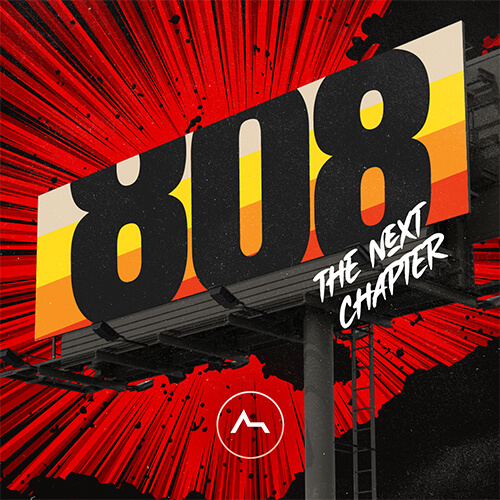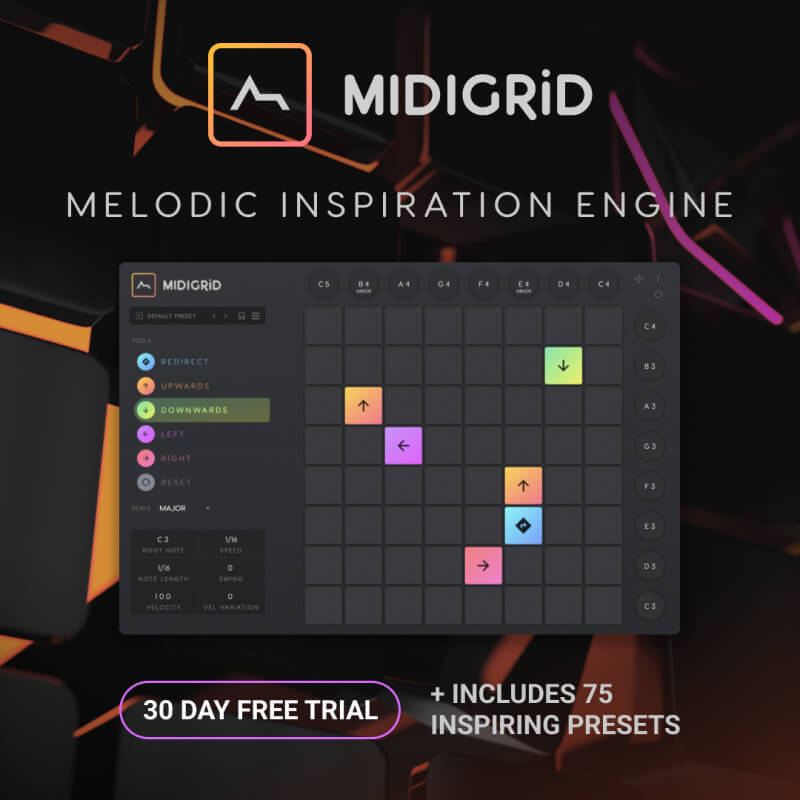News
Celebrating 808 Day: Why the TR-808 Still Rules the Music Scene
Today, we celebrate 808 Day—an annual homage to the legendary Roland TR-808 drum machine, a device that has profoundly shaped the landscape of modern music. From its humble beginnings to its status as a cultural icon, the 808 has left an indelible mark on genres like hip-hop, electronic, and pop. Let’s take a moment to explore why the 808 still holds its ground in the music world today.

A Brief History of the 808
Released in 1980, the TR-808 was initially met with mixed reviews and was considered a commercial failure, with only about 12,000 units produced before it was discontinued in 1983. Critics dismissed its synthetic sounds as unrealistic, but underground artists quickly recognized its potential. Tracks like Afrika Bambaataa’s “Planet Rock” and Marvin Gaye’s “Sexual Healing” showcased the 808’s unique sound, helping to establish it as a cornerstone of hip-hop and electronic music.
As the years went by, the 808 gained a cult following, particularly for its deep, booming bass drum. It became an essential tool for producers, and its influence spread across genres, making it one of the most sought-after drum sounds in music history. Today, the 808 is more popular than ever, with its sounds integrated into countless hit records and even referenced in lyrics.
The 808 Sound: Why It Still Works
Timelessness: The 808 kick drum has a distinctive, resonant quality that gives it a timeless appeal. Its ability to provide a powerful low-end thump makes it a favorite among producers looking to create impactful tracks.
Versatility: The 808 isn’t just a kick drum; it includes a range of sounds like snare, hi-hats, and percussion that can be used creatively across various genres. Whether you’re producing hip-hop, trap, house, or pop, the 808 can fit seamlessly into your mix.
Cultural Significance: The 808 has become a symbol of innovation in music production. It has been referenced in countless songs and has inspired generations of artists. Its presence in modern music is a nod to the past, connecting new sounds with the rich history of electronic music.
Accessibility: With the rise of digital audio workstations (DAWs) and software emulations, the 808 sound is more accessible than ever. Producers can easily incorporate 808 sounds into their projects without needing the original hardware, allowing for creativity and experimentation.
Simplicity and Depth: The 808’s design is straightforward, making it easy for beginners to start making beats. However, its depth allows for complex programming and sound manipulation, giving experienced producers the tools they need to create intricate rhythms.
Celebrating 808 Day
To honor this iconic instrument, here are some fun ways to celebrate 808 Day:
Play the 808: Dive into the Roland TR-808 through online platforms like the Roland50 Studio, where you can access virtual versions of the 808 and other classic gear.
Watch the 808 Documentary: Check out the 2015 film that chronicles the life and influence of the 808, featuring insights from artists like Pharrell and Lil Jon.
Learn about its History: Take some time to explore the rich history of the 808 and its impact on music. Understanding its journey will deepen your appreciation for this legendary machine. A great place to start is by listening to how it’s been used and how the sound has evolved – check out our playlist of iconic songs featuring 808’s
Improve Your Skills: Use this day to enhance your production techniques. Look for tutorials on how to get creative with 808 sounds, from tuning to programming unique patterns.
Get New Sounds: Treat yourself to some new 808 samples or instruments to expand your sonic palette. There are plenty of options available, from free packs to premium sounds.
The TR-808 drum machine is more than just a piece of equipment; it’s a cultural phenomenon that has shaped the sound of modern music. As we celebrate 808 Day, let’s remember the impact this iconic instrument has had and continues to have in the music world. Whether you’re a seasoned producer or a curious newcomer, the 808 offers endless possibilities for creativity and expression. So crank up those beats and let the 808 kick resonate!
808 Go To Guide
If you’re new to electronic music production and want to sound like you know your stuff when discussing 808s, this guide is for you. We’ll cover the basics of what an 808 is, its history, and how to use it effectively in your tracks. By the end, you’ll be dropping 808 knowledge like a seasoned pro.
What is an 808?
An 808 is a specific type of kick drum sound that originated from the Roland TR-808 drum machine, released in 1980. The TR-808 used analog synthesis to generate its sounds, including a distinctive booming bass drum that became the foundation of countless hip-hop and electronic tracks.
While the original TR-808 is no longer in production, its iconic 808 kick drum sound lives on through samples, software emulations, and modern drum machines. The 808 kick is characterized by its deep, resonant tone and long decay, which allows it to function as both a kick and a bass line. Its synthetic, non-pitched sound is instantly recognizable and has become an integral part of many genres.
The History of the 808
Despite being a commercial failure upon its release, the TR-808 quickly became a staple in underground music scenes in the early 1980s. Pioneering artists like Afrika Bambaataa, Marvin Gaye, and New Order used the 808 to craft genre-defining tracks that helped shape the sound of hip-hop, electro, and house music.
As the 808 gained popularity, its influence spread to other genres. The 808 kick’s ability to provide a deep, rumbling low-end made it a perfect fit for the emerging genres of Miami bass and ghettotech in the late 80s and early 90s. In the 2000s, the 808 kick found a new home in the booming, sub-heavy sound of trap music, with producers like Lex Luger and Metro Boomin using it to craft the signature sound of the genre.
The 808’s enduring popularity is a testament to its unique sound and versatility. Its influence can be heard in countless hit records across genres, from Whitney Houston’s “I Wanna Dance with Somebody” to Rihanna’s “We Found Love.” The 808 has become an iconic symbol of electronic music culture, with mentions of it appearing in countless hip-hop lyrics.
When to Use the 808
The 808 kick is best suited for genres that prioritize a deep, rumbling low-end, such as hip-hop, trap, dubstep, and bass music. It can also be used effectively in house and techno tracks to provide a solid foundation for the groove.
When using the 808 kick, make sure it’s in key with the rest of your track and that it’s not clashing with other low-end elements like the bassline or sub-bass. The 808 kick works best when it’s the primary low-end element in the mix.
When Not to Use the 808
While the 808 kick is a versatile tool, it may not always be the best choice for every track. In genres that prioritize a more organic, acoustic sound, such as indie rock or folk, the synthetic nature of the 808 kick may not fit well.
Additionally, if your track already has a lot of low-end information, adding an 808 kick may result in a muddy, overly bass-heavy mix. In these cases, it’s better to opt for a shorter, punchier kick drum sample that won’t compete with the other low-end elements.
How to Identify a Good 808
When searching for 808 samples or emulations, there are a few key things to look for:
Depth and resonance: A good 808 kick should have a deep, powerful low-end that resonates in your chest.
Pitch stability: The pitch of the 808 kick should remain consistent throughout its decay, without any noticeable pitch shifts or warbling.
Transient definition: While the 808 kick is known for its long decay, it should still have a defined transient at the beginning of the sound to provide impact.
Authenticity: If you’re looking for a true-to-the-original 808 sound, make sure the sample or emulation captures the unique character and imperfections of the original TR-808.
Using the 808 Effectively
When using an 808 kick in your productions, there are a few key things to keep in mind:
Tune the 808 to your key: The 808 kick can be tuned to different pitches, so make sure it’s in key with the rest of your track. This will help it blend seamlessly with your bassline and chords.
Control the decay: The long decay of the 808 kick can be both a blessing and a curse. If it’s too long, it can muddy up your mix. Use an envelope to control the decay time and make sure it’s not overlapping with other elements in your track.
Layer it with a punchy kick: While the 808 kick provides the low-end thump, layering it with a shorter, punchier kick sample can help it cut through the mix better. The combination of the two kicks creates a powerful, impactful sound.
Use it sparingly: As with any drum sound, it’s important not to overuse the 808 kick. Use it judiciously to highlight important moments in your track and avoid fatiguing the listener’s ears.
Experiment with variations: The 808 kick can be processed in various ways to create different sounds. Try adding distortion, compression, or reverb to create unique variations that fit your track.
The 808 kick drum is an essential tool in any electronic music producer’s arsenal. By understanding its history, unique sound, and how to use it effectively, you’ll be well on your way to crafting tracks that will have the dance floor shaking. So go forth, drop some 808 knowledge, and make some music!





